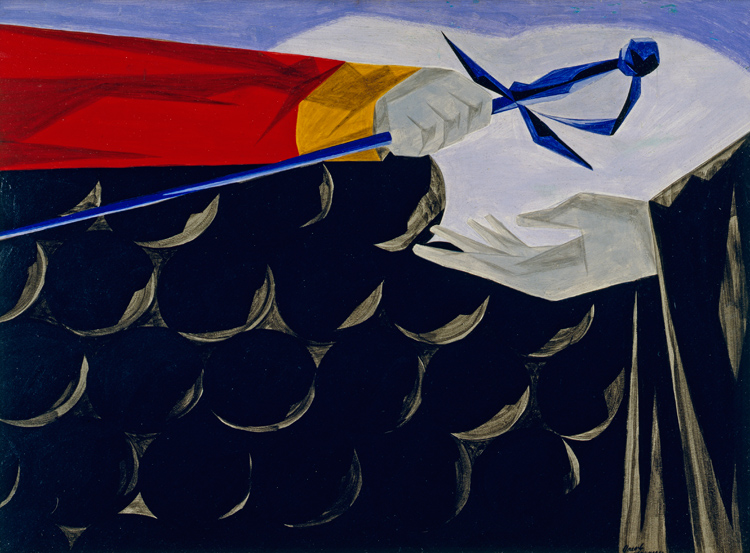This spring, former Phillips curator Beth Turner taught an undergraduate practicum at the University of Virginia focusing on Jacob Lawrence’s Struggle series. In this multi-part blog series, responses from Turner’s students in reference to individual works from the series will be posted each week.

Jacob Lawrence, Struggle … From the History of the American People, no. 13: Victory and Defeat, 1955. Egg tempera on hardboard, 16 x 12 in. Private Collection of Harvey and Harvey-Ann Ross. © 2015 The Jacob and Gwendolyn Knight Lawrence Foundation, Seattle / Artists Rights Society (ARS), New York
This panel depicts the surrender of British General Cornwallis at Yorktown, a battle which is remembered as the last major engagement of the American Revolution, effectively ending the conflict with a resounding American victory.
Unlike the more eventful scenes in the Struggle series, which depict violent interactions between people, this panel is one in which Lawrence omits figures. It is in these select panels that chaotic masses of bodies, violent interactions, and scenes of death are exchanged by a peaceful encounter between the hands of Victory and Defeat. Defeat, dressed in the British red coat, is situated above the outstretched hand of Victory which extends from a long black cloak. Victory beckons out to Defeat to relinquish its sword amidst a primarily blackened and flat background of piled cannon balls, an exchange that is ultimately respectable and diplomatic.
Although moments of violence often stand out in history, here Lawrence emphasizes the impact of the simple exchange between opposing hands through his simplistic style. While traditional depictions of Yorktown show the American general towering over the British general, here the hands are on an almost equal plane, suggesting that the violence has ended. Yet the subtle gap between Victory and Defeat also suggests a moment of tension as Defeat realizes his vision has come to an end.
Maureen O’Connor


